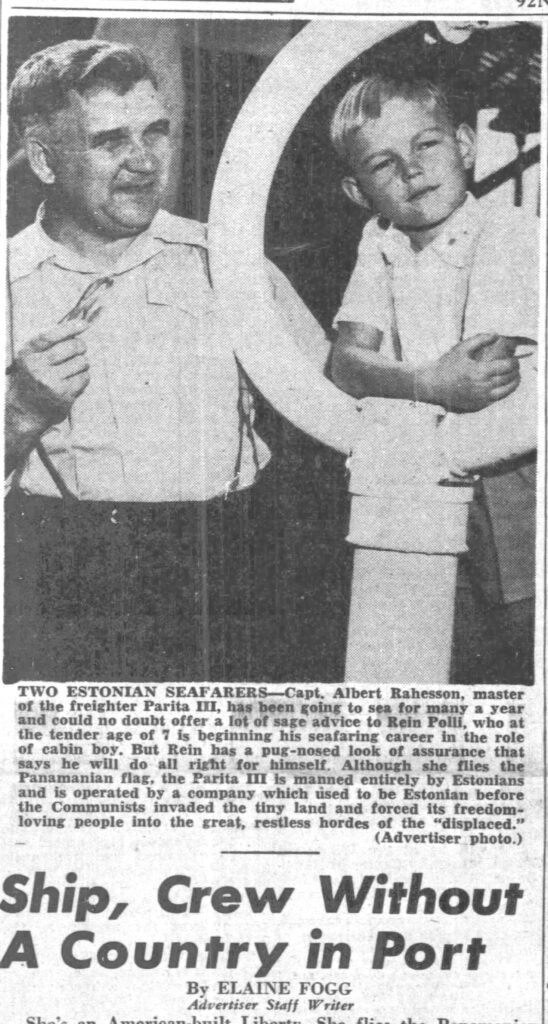Boats

Captain Albert Rähesson with cabin boy Rein Polli, 7. Honolulu Advertiser, February 2, 1949
Parita
The Parita III was a former U.S. Liberty ship that transported cargo commercially after World War II. It was not a Viking ship filled with refugees, but its crew was entirely Estonian and they had also lost their homeland. Led by Captain Albert Rähesson, the group included 36 men, six women, and a seven-year-old boy. On February 1, 1949, the ship arrived unannounced in Honolulu, Hawaii, carrying scrap metal from Kobe, Japan, to Philadelphia. The Honolulu Advertiser reported that the crew had left Estonia before the war, and they earned their livelihood carrying freight between ports around the world.
Most of the Estonian merchant fleet was destroyed during the war and a British shipping company owned the Parita III, which sailed under a Panamanian flag. “[We are] people without a country,” Rähesson said. The newspaper wrote about the homeless crew, noting that the women were tired of their nomadic existence. Hugh W. Lytle, editorial page editor, published an editorial praising the Estonians, “who by their resourcefulness and ability have solved the problem of existence for themselves, even though they have no homeland.” He said America would benefit from welcoming them as immigrants.
Two months after departing Honolulu, the Parita III reached Baltimore, Maryland. The crew was paid off and the ship was sold to new Greek owners. The Estonians were given a month to find new jobs or leave the country, but they took advantage of their situation to apply for immigrant status. Some stayed in America, such as Nelly Järg, who was granted permanent residency in 1953 under the Displaced Persons Act. The captain and the Polli family settled in Canada.

The Estonian female crew of the Parita.
Known crew:
- Captain Albert Rähesson and Emilia, his wife
- Emilie Polli and her son Rein, 7
- Hilda Vaikjärv
- Linda Gabriel
- Helga Uilder
- Nelly Järg
